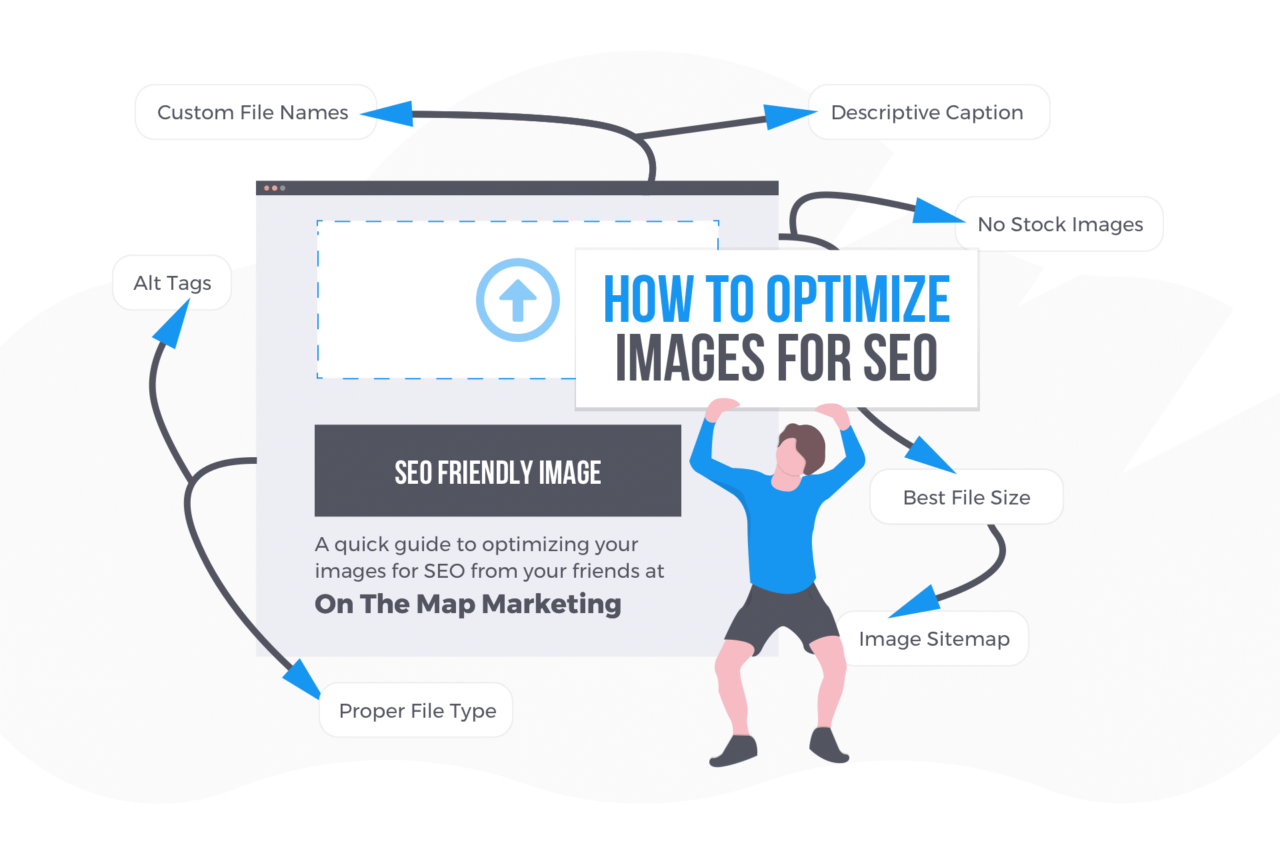Image SEO: 7 Useful Tips To Better Optimize Images for SEO

What is Image Optimization?
Any seasoned SEO company worth their salt will tell you that image optimization matters. With billions of photos on the internet, getting yours seen has become an increasingly difficult task. But it also offers a greater reward. In a society that values Facebook videos and Instagram photos over articles or blog posts, images are becoming a key feature necessary to attract readers. And that’s why we have created this handy guide. Here are our 7 useful tips to better optimize your images!
1. Don’t use stock images
These images are easily identifiable and generally cause users to glance over them instead of interacting with them. Remember, the more clicks an image gets, the higher it will rank.
2. Customize the filename
Don’t leave images titled “img_382702.” If the image is of a lawyer, use the lawyer’s name and maybe the city they practice in. The more specific the name, the better. Instead of labeling a watch “watch,” make the filename “Gold Rolex Daytona Watch.” This helps Google to properly file and sort the image.
3. Use the optimal file size for an image
In general, images are much larger than they need to be for websites, so reducing the file size helps to decrease page load speed. The quickest tool for this is Adobe Photoshop’s “Save for Web” function. You can also run these images through a software such as ImageOptim to remove bloated data within the file without sacrificing quality.
4. Save your image as the proper file type
The three main file types are GIF, PNG, and JPG:
JPG – The standard for photos (if the image quality looks poor as a JPG use PNG).
PNG – Used for high-quality photos as well as photos that include text, such as website banners. PNG also supports transparent backgrounds while JPG does not.
GIF – Best for small images that don’t have a lot of detail, such as buttons. This is the smallest file type.
5. Use alt tags for all photos
The more descriptive and specific these are the better it will be for SEO. There’s already a ton of content online about how to best use alt tags for SEO.
6. Adding descriptive captions
Captions generally appear below the image and they see up to 16% more readership than standard text, so it can be a great way to convey a short bit of information to readers as well as an additional way to tell Google what your image is about.
7. Create an image sitemap
Google now allows you to submit a sitemap just for images. It’s a great way to let Google discover your images effectively as well as improve your image traffic. There is also a WordPress Plugin for this, so it’s becoming very easy to do!
Table of Contents
Related Articles
Dominate Your Market with Digital Marketing Services That Deliver
Talk to a certified professional today, and we will design a strategy specific to your case.






